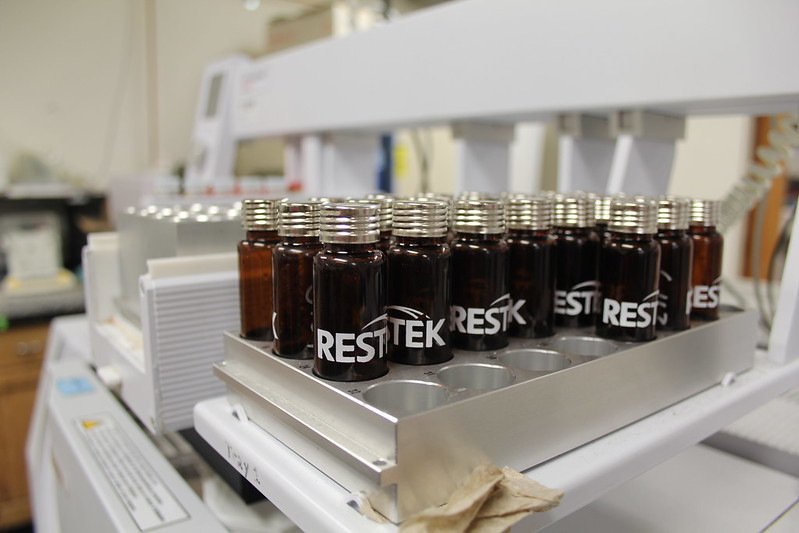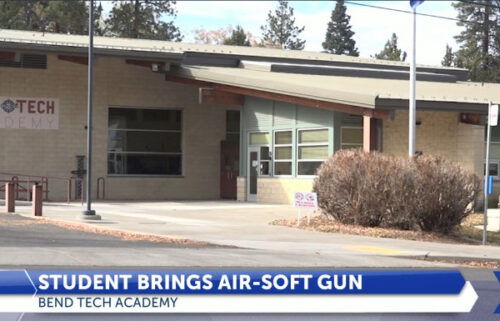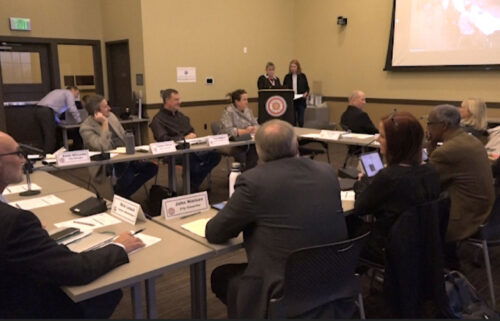OSU researchers studying impact of wildfire smoke on wine

'We can definitely get these answers. It is just going to take some time.'
CORVALLIS, Ore. (KTVZ) – Oregon State University scientists have analyzed nearly 500 samples of wine and grapes from throughout Oregon in recent weeks, to better understand the impact of wildfire smoke on wine.
Wildfires devastated much of the West Coast of the United States last month, continuing a recent trend of wildfires occurring during the grape harvest in California, Oregon and Washington, three of top four wine producing states in the U.S.
Grapes absorb smoke from the fires and at high enough levels that the smoke can negatively impact the flavor of the wine and lead to significant negative economic impacts for grape growers and winemakers.
In the immediate aftermath of this year’s fires, wine researchers at Oregon State, who had already been studying the impact of smoke on wine, mobilized to help grape growers and winemakers throughout Oregon. Elizabeth Tomasino and Michael Qian, who both study the chemistry of wine, started accepting samples of smoke-impacted grapes.
After processing the grapes and wine in their labs, they use a gas chromatography mass spectrometer to analyze the compounds in them. That analysis provides grape growers and winemakers a sense of how severely their grapes or wine have been impacted by the smoke and can help them decide whether it is worth harvesting the grapes or processing them into wine.
“From a research standpoint, it’s a lot of information that is going to be very useful for current projects and upcoming ones. But from an industry standpoint, it may be quite disappointing,” said Tomasino, an associate professor of enology in the Department of Food Science and Technology in the College of Agricultural Sciences.
Mike Rava, who grows 40 acres of grapes in Silverton, about five miles from where fires were burning last month, has made two trips to Oregon State in recent weeks to drop off samples with Tomasino.
In a typical year, he would sell his grapes to a winery for around $250,000. After the fires this year, he was trying to decide whether it was worth even picking the grapes. He was appreciative to receive feedback from Tomasino and supportive of their research effort.
“Since our vineyard site was so close to the fires – we’re so extreme with our site’s levels of smoke taint– I think this puts us in a very good data collection area, to see if somehow we can save this wine; then we’re going to be learning something,” Rava said.
While the Oregon State researchers are able to provide some guidance to grape growers and winemakers, many questions remain about the impact of smoke on wine. These include:
- Understanding what compounds in smoke contribute to a smoky tasting wine and what thresholds of those compounds wine drinkers will accept.
- Determining the key compounds that contribute to smoke taint aromas in different grape varieties and wines.
- Understanding how to remove those compounds without impacting the quality of wine.
- Determining at what point in grape development the fruit is most vulnerable to smoke exposure.
- Determining the relationship between characteristics of a smoke event – such as intensity, duration, proximity, particle size, type of fuel – to grape and wine impacts.
- Developing standardized, reliable and affordable smoke testing methods for grape growers and winemakers.
“We definitely can get these answers,” Tomasino said. “It is just going to take some time.”
Last year, Oregon State researchers started to address these questions with funding from the American Vineyard Foundation, Northwest Center for Small Fruits Research and the U.S. Department of Agriculture National Institute of Food and Agriculture.
The University of California, Davis and Washington State University are collaborators on the USDA grant. Next year the three universities plan to submit a proposal for a larger grant to expand the research. Data they are gathering now from the grape and wine samples they have collected will be used in their grant proposal.
Tomasino and Qian are part of the Oregon Wine Research Institute, a collaboration between Oregon State, the Oregon wine industry and other academic partners. Other Oregon State researchers who are part of the Oregon Wine Research Institute and conducting smoke exposure research and Extension outreach include James Osborne, Patty Skinkis and Alec Levin.



